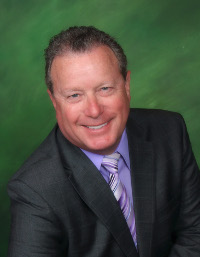
Gary Vaughn, CDT, CTO
President Ronald Reagan was known to have displayed a plaque on his desk in the Oval Office that read: “There is no limit to the amount of good you can do if you don’t care who gets the credit.” Over the course of my life, I have seen this quote play out in many forms. Several weeks ago this quote flashed back in my memory as I had the privilege to participate in our latest PAC Live Patient Demonstration. On September 23rd, 20 doctors and team members gathered at the Newport Hyatt Regency for an all day lecture and case review at which time smile design principles, preparation design, temporization, and laboratory communication were shared by PAC Clinical Director, Dr. Thomas Dudney and myself. The very next morning we were able to demonstrate the concepts taught in those lectures at a Live Patient teaching environment.
Several weeks prior to the program, the patient selected for the course, a female in her early 50s came to 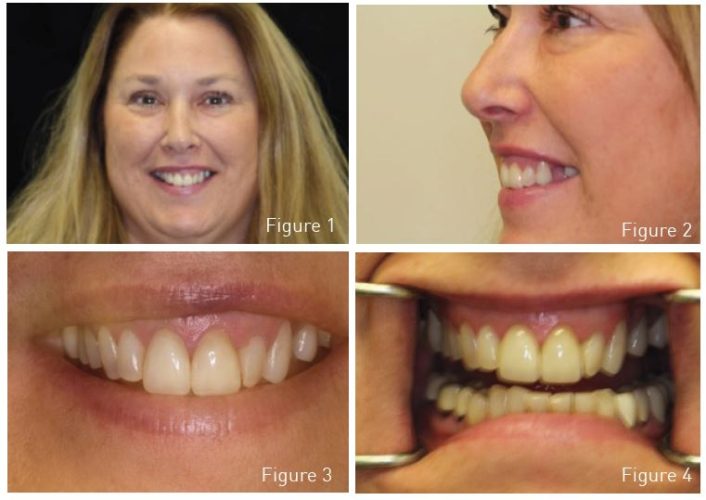 the office of Dr. Michael Spitzer in Newport Beach, CA to be evaluated and diagnosed for treatment. The patient presented with aging, yellow veneers on the maxillary central incisors, which was her primary concern. As is typical in most every diagnosis, the primary concerns of a patient are rarely the only challenge presented with a case. Upon examination, in addition to the main concern, buccal corridors on either side of the maxillae were deficient, particularly on the patient’s left side, with the absence of tooth #12 and #14 (Figures 1-4). This was not your average veneer case. At the very least it needed a multidiscipline approach. The PAC is committed to teaching concepts that can be used in all aspects of restorative dentistry designed and finished aesthetically. Understanding that #12 and #14 were missing, the option of implants had been entertained by the patient for some time. However, with the wedding of her son rapidly approaching, she was highly motivated to achieve a beautiful, bright new smile quickly. With insufficient time for the healing process, implants were out of the question, at least for now. Our remedy, which could serve in the short term should she decide to have implants later, or on the long term if she felt comfortable with our solution post delivery, was to fabricate a four unit zirconia bridge, with two ovate pontics, cut back and layered with e.max porcelain (Ivoclar Vivadent). Careful selection of the zirconia and e.max ingots would be paramount but we were confident with the selections we now have available, we could match and compliment the adjacent anterior e.max veneers, as well as provide a stable, balanced occlusion for now. Tooth #10 was also rotated, which only added to the spacing deficiency presented with a missing first bicuspid. The lateral incisors both appeared to be relatively shorter than desired, due to the prominence of the central incisors most likely brought about by the compensatory eruption.
the office of Dr. Michael Spitzer in Newport Beach, CA to be evaluated and diagnosed for treatment. The patient presented with aging, yellow veneers on the maxillary central incisors, which was her primary concern. As is typical in most every diagnosis, the primary concerns of a patient are rarely the only challenge presented with a case. Upon examination, in addition to the main concern, buccal corridors on either side of the maxillae were deficient, particularly on the patient’s left side, with the absence of tooth #12 and #14 (Figures 1-4). This was not your average veneer case. At the very least it needed a multidiscipline approach. The PAC is committed to teaching concepts that can be used in all aspects of restorative dentistry designed and finished aesthetically. Understanding that #12 and #14 were missing, the option of implants had been entertained by the patient for some time. However, with the wedding of her son rapidly approaching, she was highly motivated to achieve a beautiful, bright new smile quickly. With insufficient time for the healing process, implants were out of the question, at least for now. Our remedy, which could serve in the short term should she decide to have implants later, or on the long term if she felt comfortable with our solution post delivery, was to fabricate a four unit zirconia bridge, with two ovate pontics, cut back and layered with e.max porcelain (Ivoclar Vivadent). Careful selection of the zirconia and e.max ingots would be paramount but we were confident with the selections we now have available, we could match and compliment the adjacent anterior e.max veneers, as well as provide a stable, balanced occlusion for now. Tooth #10 was also rotated, which only added to the spacing deficiency presented with a missing first bicuspid. The lateral incisors both appeared to be relatively shorter than desired, due to the prominence of the central incisors most likely brought about by the compensatory eruption.
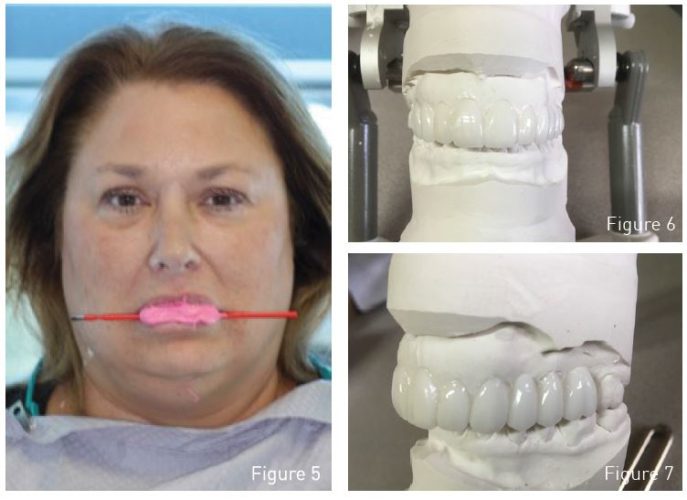 Dr. Spitzer performed a thorough exam, took impressions and photos, and obtained a stick bite. These items were sent to Corr Dental Designs, where a diagnostic wax-up was created. Preparation guides and a temporary matrix were fashioned around the wax-up to assist in providing the desired transformation (Figures 5-7).
Dr. Spitzer performed a thorough exam, took impressions and photos, and obtained a stick bite. These items were sent to Corr Dental Designs, where a diagnostic wax-up was created. Preparation guides and a temporary matrix were fashioned around the wax-up to assist in providing the desired transformation (Figures 5-7).
Dr. Mark Olson, who recently relocated his practice from Rocklin to Newport Beach, graciously offered the PAC use of his brand new office. With the anticipated crowd returning Saturday morning after Friday’s lecture, it would have been impossible to accommodate all who wanted to observe within the confines of the operatory at one time. Therefore, we arranged for Brandon Miyasaki, who has helped the PAC with special video projects in the past, to travel from Sacramento and set up our video camera in the operatory directly over the reclined patient’s mouth. This would enable us to stream the feed into the comfort of Dr. Olson’s patient waiting area on to a “bigger than life” video monitor. In this way, Dr. Dudney was able to describe in words and show in real time, all of the techniques and protocols of the previous day’s lectures. Doctors and team members were also able to rotate through the operatory in small groups to observe first hand throughout the procedure. Dr. Olson’s chairside assistant Geni skillfully supported Dr. Dudney in the clinical process. I demonstrated the use of a stick bite along with the Kois Facial Analyser from Panadent. Within a few short hours, some old dentistry was removed, caries addressed, and the case was prepped, complete with beautiful new temporaries matching the diagnostic wax-up, through the use of a matrix supplied by the laboratory. Photos were taken of the patient with the new smile which served as a valuable tool over the next several weeks for the patient to “test drive” her new smile and work out any possible function issues (which ended up being non-existent in this case) as well as determine any aesthetic preferences that needed to be addressed (Figure 8-10).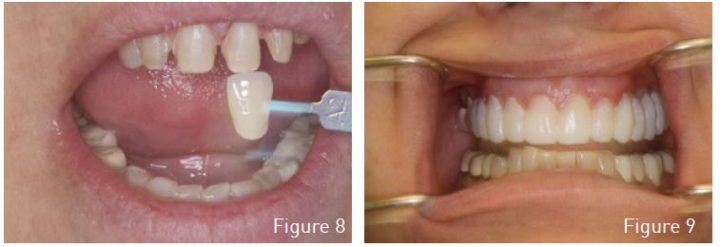
Because of the logistics of our Live Patient Demonstration the case was handed off to Dr. Spitzer, one of our Program Directors in Southern California, and who had overseen the original patient screening. Several weeks later, the patient and I returned to Dr. Spitzer’s office for delivery of the new restorations. There Dr. Spitzer was assisted by Maria chairside, in the removal of the temporaries and trying in of the case. To achieve a perfect match, Dr. Spitzer tested several different try-in pastes until it was ultimately determined by committee that a plus 3 try in material from the Ivoclar Veneer kit was the answer to us achieving the desired shade. I might note that at this point, many of you reading this article may cringe at the prospect of “handing off” a patient. I can only assure you that the protocols taught by the PAC, which are implemented over and over, every day, by our skilled instructors foster a seamless transfer from one skilled professional to another. Through that trust and confidence, we are assured that each doctor will deliver the desired result. In this particular case, because all the prep work had been performed in Dr. Spitzer’s office weeks earlier, the patient was already 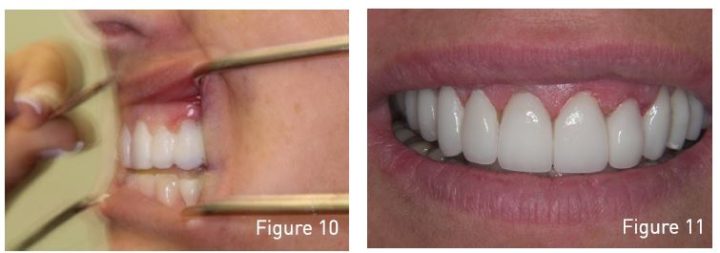 completely confident in a stunning outcome, as you can see for yourself was the result (Figure 11).
completely confident in a stunning outcome, as you can see for yourself was the result (Figure 11).
Many thanks to Lissa Bisson for providing the necessary materials and travel arrangements. Doctors Dudney, Olson and Spitzer, Geni, Maria, Brandon Miyasaki, our patient Wendy, all of the skilled technicians of Corr Dental Designs and Garrett Caldwell, CEO of the PAC, and any and all others I may have forgotten. Hence, the phrase, “There is no limit to the amount of good you can do if you don’t care who gets the credit.”
If you have questions about this article or if you would like to send a case, please contact the Pacific Aesthetic Laboratory Group at www.pacificaestheticdentalstudio.com, Gary Vaughn, CDT, CTO (916) 786-6740, or via email gvaughn@thePAC.org.

